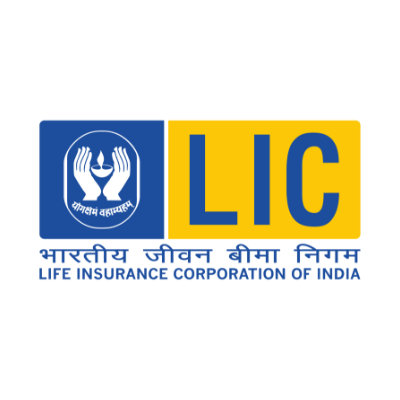WHAT IS COINSURANCE IN HEALTH INSURANCE
Coinsurance is a term used in health insurance that refers to a percentage of treatment costs that you have to bear. It is an amount generally offered as a fixed percentage and needs to be paid after paying the deductibles. It is very similar to the co-payment provision under health insurance. Health insurance plans typically carry cost-sharing provisions. Cost-sharing refers to paying a portion of your medical expenses while the other portion is paid wholly by your insurer. So, coinsurance is a form of cost-sharing. Along with Deductibles and Copayments well.
Understanding Coinsurance
Coinsurance is employed in health insurance to protect health insurers against large claims. It is a percentage that you can pay initially for your medical expenses before your health insurer pays for the rest of it.
Let’s take an example to understand coinsurance in-depth. For instance, say the fixed coinsurance for your health insurance policy is 10% then you shall be liable to bear 10% of any treatment cost availed by you, while the remaining 90% shall be borne by the health insurer. So, if your expenses towards treating a certain disease are Rs.10,000, you will be required to pay Rs.1000 and Rs.9000 shall be covered by your health insurer under your policy. Keep in mind that this amount is calculated after you have paid your deductibles.
Like, suppose your health insurance policy is for Rs.5 lacs with Rs.5000 deductibles, 10% coinsurance and a 10% copay clause attached to it. Then, if the treatment cost is Rs.10,000, with a deductible of Rs.5000 that has been paid, the rest remaining is Rs. 5000. From this Rs.5000, you shall have to pay 10% which equals to Rs.500 as per the co-insurance clause. The rest of Rs.4500 shall be covered by the insurance policy. Remember co-insurance is always levied after the deductibles have been paid.
Let’s Take a Look at the Calculation of the Coinsurance Clause
To calculate the coinsurance on your health policy, you need to understand the rate applicable to your plan. If the co-insurance is 20% of the medical costs, then you must first convert the percentage into a decimal. Hence, co-insurance of 20% would become 0.20 and that of 15% would become 0.15. Then, the estimation of the payment is:
Coinsurance Rate(Fixed) x (Total Cost of Bill - Deductibles) = Amount to be Paid
Like say, with a coinsurance of 20%, a deductible of Rs.2,000 and a total medical cost of Rs.50,000 the calculation for coinsurance shall be;
0.20 x (Rs.50,000 - Rs.2,000) = Rs.9,600
Thus, the amount you are required to pay after covering for the deductibles is Rs.9,600.
Your health insurer always keeps a track of your cost-sharing electives and how much payment is made by you or towards deductibles, it can all be found under the Explanation of Benefits EOB section that your health plan provides you after you receive any medical treatment. The EOB specifies how much co-insurance you must pay, as required. And whether it can be paid directly to the hospital, doctor's office or the pharmacy.
Is it Better to Opt for Coinsurance?
By opting for coinsurance for your health insurance plan, you shall see the premium amount getting reduced. The main benefit is lower premiums. However, with cost-sharing terms your liability towards the policy shall increase. You shall have to take care of the initial expenses every time a medical emergency comes. This can lead to financial difficulties. It is thus more advisable to avail health insurance plans without any cost-sharing imposition or terms. It is easy to find a suitable health insurance policy that matches your needs rightly. Make sure to read and check all the terms and conditions under your health insurance policy carefully.
In summary, although choosing coinsurance may result in lower premiums on your health policy, you cannot disregard the cost-sharing provision where you have to pay for a certain percentage of costs from your medical expenses incurred. Eventually paying for urgent medical care emergencies may become unnecessary as well as expensive. Hence before purchasing any insurance policy, you should examine the health insurance plans, study all of the terms of the plan carefully and then decide which health insurance plan suits your requirements the best.
FAQs – Frequently Asked Questions
Let's take a look at some frequent queries on coinsurance;
Q1. Is it possible that deductibles and coinsurance get levied on a health policy at the same time?
Yes, coinsurance clauses are generally added to health insurance policies along with deductibles.
Q2. Is coinsurance a mandatory requirement?
No, coinsurance is not a mandatory clause. It is a cost-sharing provision under health insurance.
Q3. Does the co-insurance amount vary depending on different services?
No, coinsurance is usually a fixed percentage of the treatment costs. However, the amount can vary as per the total cost of the medical treatment.
Q4. What is the impact on premiums in coinsurance?
Health insurance plans with co-insurance clauses tend to have lower health insurance premium amounts. However, as a policyholder, you also need to consider the fixed percentage of costs to be paid every time you avail of medical treatment.
Q5. What is the deductibles clause in health insurance?
Deductibles in health insurance denote a fixed sum of money that you have to pay before your health insurer starts to contribute to the cost of your medical treatments.
Q6. Is there a difference between copayment and coinsurance?
Both copayment and coinsurance are similar, they are terms in health insurance referring to the policyholder’s responsibility to pay for a portion of the healthcare costs. A copayment is a set amount that the policyholder must pay for a specific treatment while coinsurance is a percentage of the total costs or bill for any medical treatment availed by the policyholder under the health plan.For instance, usually,a coinsurance arrangement is such that the medical insurance company pays 80 percent of costs for a given medical treatment, with the policyholder ends up paying 20 percent. Copayments, coinsurance, and deductibles are all examples of cost-sharing functions under health insurance.




































